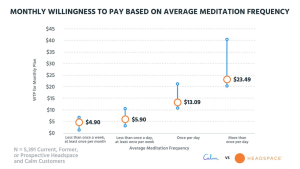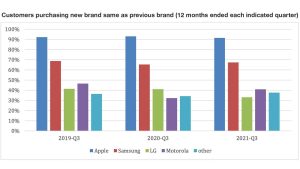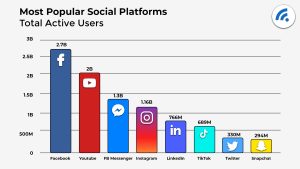
The relationship between buyers and product owners is as meaningful as the relationship between Tom Hanks and his box of chocolates. It is the basis that forms supply and demand, and understanding it can help ensure business growth.
We’ve all heard the saying “customer is king”. Well, when it comes to willingness to pay (WTP), so is your product.
By having a clear understanding of your target market and a clear understanding of your product/service, you can bridge the gap between your price and what your customers are willing to pay.
Both you and your customers need to leave a transaction happy. It’s about finding that sweet spot where both producers and consumers agree. This is where a clear understanding of a customer’s willingness to pay comes into play.
In this post, we will delve into the importance of WTP and the strategies you can use to move your business forward.

Source: Unsplash
The Basics of WTP
Now, you may be thinking “what is the customer’s willingness to pay and why is it important to my business?” So, let’s take a closer look at WTP and find out why it is an essential part of any business strategy.
WTP is the maximum price that a customer is willing to pay for a product or service. It’s a delicate balancing act in finding a price point that is attractive to your customers as well as your business revenue.
Whether you are selling trainers or providing a free video chat service, WTP is an essential part of any transaction.
Willingness to pay coincides with the willingness to accept (WTA), which is the lowest price that you can afford to sell your product/service.
The agreed price must be something both parties can agree on during a sale.
Why is WTP Important?
When you find your target demographics’ WTP, you discover a minimum and a maximum price point. Below, you can see an example breakdown of WTP for Calm and Headspace. Highlighting the minimum and maximum price points is a great way to start honing in on the ideal price.

Source: Profitwell
While this information is relevant, what you should target is the safe zone found between these two points. This target group consists of the majority rather than the few, which is what we want to focus on.
If you set your prices too high, you effectively drive away your customers. Applying your customer’s WTP ensures a conversation rather than a dispute.
Applying the correct customer WTP will see your revenue soar. Effective pricing is as important as effective customer care when achieving optimum revenue for your business.
How to Calculate WTP?
By calculating a customer’s willingness to pay, a company can set their prices to maximize profits and customer satisfaction. Here are some ways to calculate WTP.
Market Competitor Research
Basic economics tells us that if your market is oversaturated, your price point is set by your competitors. If your product price is much higher than your competition, customers are more likely to look elsewhere.
This is where you can use the rareness of your product to your advantage.
Imagine you’re a company that provides custom domain email addresses for .au domains. If you are the only company that offers this service, you can set your own price point as you have no competition, so the market is open.
If you have a product or service that is rare, customers will be willing to pay a higher price due to its valuable nature (although pricing your product too high can drive customers away).
Unique products are few and far between. Using market research allows you to analyze your competitors and estimate your price in comparison to them.
Customer Research
When it comes to strategy, customers are always key. Most businesses segment their audience by:
- Location – age, education, income.
- Demographics – country, state, city.
- Consumption behavior – frequency, volume, purpose..
WTP explores a thorough understanding of your customers. Through this effective research, you can build a customer bio and create a market that tailors to your research.
It also ensures a greater knowledge of your product and its valuable key features. This is necessary for reducing customer acquisition costs as you can explore what is relevant to their needs. In doing so you are developing a clear marketing strategy.
Survey (Direct and Indirect)
There is no clearer way of determining your customer’s WTP than simply asking them.
Surveys collect a large amount of quantifiable data regarding customer values. Questions such as customer loyalty as well as many other data points can be discovered and used to your advantage.
Surveys are a great way to form your target customer base. Imagine you’re a healthcare contact center. Utilizing surveys can help increase customer understanding – what problems are they having? How easy do they find it to talk to a medical professional? – as well as business needs, thus improving its performance.
There are two types of surveys:
- Direct surveys – where you directly ask your customers their WTP
- Indirect surveys – where you provide customers with multiple options at different prices and ask them to rank in order of preference.
Both examples provide an internal baseline when calculating your customer’s WTP.
Factors That Affect Willingness to Pay
Understanding what influences your customer’s WTP means you can tailor your product in line with their expectations. By researching your customer base, you can take into account both internal and external factors and their impact.
Product Quality
Customers have an eye for quality. If your product is of high quality, your consumers will exhibit a higher willingness to pay. Customer satisfaction in a product/service inspires brand loyalty.
Price and quality have an internal response within our minds. If we see a price that is too low compared to similar products, we associate that low price with poor quality. And vice versa with higher-priced products.
If we look at the example of online communication, additional features such as a call from browser option or an online chat option will engage customers and add value, thus generating a high-quality selling point.
Brand Image
Having an established brand name such as Apple or Nike makes it easier for customers to associate preferences to their products. It is embedded within their psyche, essentially making their mind up for them.

Source: Appleinsider
State of the Economy
When the economy is thriving, customers are more likely to try new products and new companies. Whereas, if we are experiencing economic uncertainty, newer products will be put on hold in favor of essential items.
Reference Prices
We subconsciously compare prices when we encounter new products. For example, if we look at a new mobile phone, we have already formed an opinion of its cost based on our existing knowledge.
Marketers might not be able to entirely change our internal reference points when it comes to prices, but they can influence them. Many online sources list the selling price as well as any savings that you may be entitled to alongside the current price. In doing so they are promoting short-term influence as a selling point.
How to Win Friends and Influence WTP
You may feel that you are powerless concerning your customer’s WTP, however, there are many actions you can take to influence your target demographics’ willingness to pay.
Value Proposition
What makes your product stand out from your competition? Why does your product deserve to be purchased over others? Simply put, your value proposition is your competitive edge.
This is your chance to articulate what your product is and why it is essential to your customer’s needs. It is your chance to explain what potential customers can expect in return from your product.
Your value proposition needs to be concise, interesting, and catchy. A great way to achieve this is through a tagline/catchphrase such as Netflix’s “Watch TV shows and movies anytime, anywhere.” This single line tells the viewer everything they need to know about Netflix – it is simple yet memorable.
Brand Awareness
Building brand awareness is a powerful marketing strategy. Having a brand presence promotes validity in your product as well as innate values.
A strong brand image will significantly increase a customer’s preference for your product. Companies such as Apple, Nike, and the luxury brand Chanel, all have a brand image that is ingrained within the public’s consciousness.
For brands such as these, their brand awareness is high – therefore, they have a built-in consumer base that is founded on recognisability.
Not every company has an established brand image, this is where word of mouth becomes your ally. Referral marketing is a great way of elevating your product at a fraction of the cost.
Influence the Influencers
Social media has become an essential tool in any marketing strategy. A way to guarantee your product is noticed is through influencer marketing. Whether discussing instacart tips or the new viral cat video, general perceptions are affected by the opinions of the day.

Source: Broadbandsearch
As you can see from the above, influencer marketing is a great way of reaching your potential customer base. And looking at the number of active users on social media platforms, it’s not one you can miss out on.
Influencer campaigns use the opinions of others to sell their products. These opinions can be found in celebrity endorsements such as George Clooney and Nescafe, or through micro influencers in particular niches. Such endorsements promote customer familiarity and by extension, their willingness to pay.
In a Nutshell…
Measuring WTP is an essential part of any business strategy. It brings you one step closer to understanding your audience and in turn understanding your product.
When acquiring new customers, it is best to have every tool at your disposal to remove the barriers between you and your potential customers.
Tags: Tips & Trends






